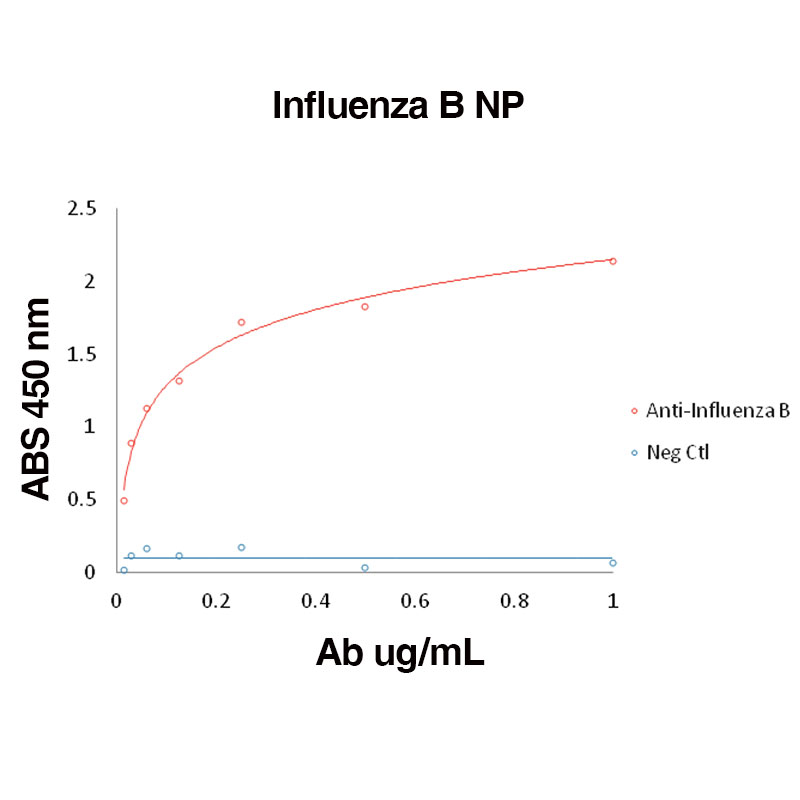Recombinant Influenza B NP (B/Florida/4/2006)
| Code | Size | Price |
|---|
| LEI-F650-100ug | 100 ug | £372.00 |
Quantity:
| LEI-F650-500ug | 500 ug | £1,255.00 |
Quantity:
Prices exclude any Taxes / VAT
Overview
Host Type: Virus
Regulatory Status: RUO
Shipping:
Frozen Dry Ice
Storage:
This recombinant protein is stable for twelve months when stored at -20°C to -70°C. Avoid Repeated Freeze Thaw Cycles.
Images
Further Information
Concentration:
? 5.0 mg/ml
Conjugate/Tag/Label:
Purified No Carrier Protein
Format:
This recombinant protein is aseptically packaged and formulated in 0.01 M phosphate buffered saline (PBS) pH 7.2 - 7.4, 150 mM NaCl with no carrier protein, potassium, calcium or preservatives added. Due to inherent biochemical properties of proteins, certain products may be prone to precipitation over time. Precipitation may be removed by aseptic centrifugation and/or filtration.
Formulation:
This recombinant protein is aseptically packaged and formulated in 0.01 M phosphate buffered saline (PBS) pH 7.2 - 7.4, 150 mM NaCl with no carrier protein, potassium, calcium or preservatives added. Due to inherent biochemical properties of proteins, certain products may be prone to precipitation over time. Precipitation may be removed by aseptic centrifugation and/or filtration.
Long Description:
There are four types of Influenza (flu) viruses: type A, B, C, and D. Influenza A and B viruses are routinely spread in people and other mammals, while also known for seasonal flu epidemics each year. Influenza B is a Betainfluenzavirus in the virus family Orthomyxoviridae. Influenza B is classified into two distinct lineages, B/Victoria and B/Yamagata1. Influenza B can be even further classified into specific clades (also known as groups) and sub-clades (also known as sub-groups) based on similarity of their HA/NA gene sequences1. The Nucleocapsid protein or nucleoprotein (NP) of influenza virus B negative-strand RNA?s primary function is to encapsulate the virus genome for the purpose of RNA transcription, replication and packaging2. Specifically, NP is the most abundant viral protein in infected cells2, therefore the NP can be and has been used for anti-influenza drug development3 The NP of influenza A and B viruses share up to 38% of their amino acid sequence, indicating region functionality differences at the amino acid level4.
NCBI Gene:
ACF54251.1
Purity:
?95% by SDS Page
Target:
Recombinant Flu A NP
References
1. Types of Influenza viruses (2019) Center for Disease Control and Prevention. 2. Hu Y, Sneyd H, et al. (2017) Curr Top med Chem. 2017; 17(20): 2271?2285. 3. Portela A, Digard P. (2012) J. Gen Virol. 2002 Apr;83(Pt 4):723-734. 4. Sherry L, Smith M, et al. (2014) Journal of Virology. 2014; 88(21); 12326-12338. DOI https://doi.org/10.1128/JVI.01542-14



